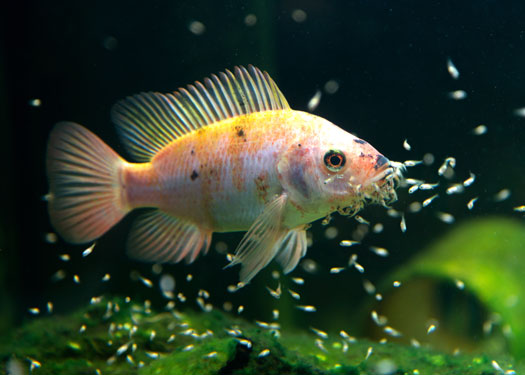
A Comprehensive Guide to Nurturing Baby Fish: Essential Care and Techniques
Introduction
The arrival of baby fish, whether in a natural habitat or a home aquarium, marks a captivating chapter in the life cycle of these aquatic creatures. These tiny, delicate beings require specialized care and attention to thrive and reach their full potential. This comprehensive guide will delve into the intricacies of baby fish care, providing a roadmap for hobbyists and enthusiasts alike to ensure the well-being and prosperity of their young charges.
Understanding Baby Fish Development
Baby fish, also known as fry, hatch from eggs with a unique set of characteristics and requirements. Their bodies are typically transparent, allowing for the observation of internal organs and the development of their swim bladders. Fry possess a large yolk sac, which serves as a source of nourishment during the initial stages of life. As they grow, the yolk sac gradually diminishes, and the fry transition to external feeding.
Establishing a Suitable Environment
Creating an optimal environment is paramount for the survival and growth of baby fish. Here are key considerations:
-
Tank Size: The size of the tank should be appropriate for the number of fry and their growth rate. A general rule of thumb is to provide one gallon of water for every 10 fry.
-
Water Quality: Pristine water quality is essential. Use a filter to remove waste and maintain a stable pH level. Regular water changes are crucial to prevent the buildup of harmful substances.
-
Temperature: Baby fish are sensitive to temperature fluctuations. Maintain a consistent temperature within the optimal range for the specific species.
-
Lighting: Provide adequate lighting for 12-14 hours per day. Natural sunlight or artificial lighting can be used.
Feeding Baby Fish
Nutrition is vital for the proper development of baby fish. Here are feeding guidelines:
-
Frequency: Feed fry multiple times throughout the day, offering small amounts of food at each feeding.
-
Food Type: Start with live food, such as brine shrimp or infusoria. As they grow, gradually introduce prepared foods specifically formulated for baby fish.
-
Quantity: Feed fry only what they can consume within a few minutes. Overfeeding can lead to water quality issues.
Monitoring and Maintenance
Regular monitoring and maintenance are essential to ensure the well-being of baby fish:
-
Observation: Observe fry closely for any signs of distress, such as lethargy, abnormal swimming patterns, or discoloration.
-
Water Testing: Regularly test water parameters, including pH, ammonia, nitrite, and nitrate levels. Adjust accordingly to maintain optimal conditions.
-
Cleaning: Perform regular tank cleaning to remove waste and debris. Avoid using harsh chemicals or detergents.
Common Challenges and Solutions
Baby fish are susceptible to various challenges. Here are common issues and their solutions:
-
Swim Bladder Problems: Swim bladder issues can cause fry to float or sink uncontrollably. Adjust the water temperature and provide a balanced diet.
-
Bacterial Infections: Bacterial infections can manifest as red or swollen areas on the body. Treat with antibiotics as directed by a veterinarian.
-
Parasites: Parasites can attach to fry and cause irritation or disease. Use anti-parasitic medications as prescribed by a veterinarian.
Growth and Development
As baby fish grow, they will undergo significant changes:
-
Size and Coloration: Fry will increase in size and develop their species-specific coloration.
-
Behavior: They will become more active and social, interacting with their tankmates.
-
Maturity: Eventually, fry will reach sexual maturity and be capable of reproducing.
Conclusion
Nurturing baby fish is a rewarding experience that requires patience, attention to detail, and a deep understanding of their unique needs. By following the guidelines outlined in this comprehensive guide, hobbyists and enthusiasts can provide the optimal environment for their young charges to thrive and reach their full potential. Remember, the well-being of baby fish depends on the care and dedication of their human guardians.
